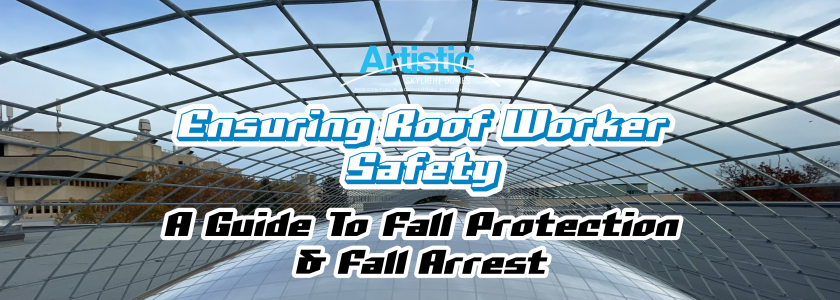
Roof worker safety starts with roofing regulation
The only way to truly live is to embrace the edge – unless you’re a roof worker. However, with a bit of elbow grease from roof worker safety and fall protection measures, our industry can make every moment count by turning this paradox into a special op of safety and security.
It’s no secret that working on roofs involves unique risks, with falls among the most significant hazards. As such, implementing proper fall protection and fall arrest systems is essential to safeguarding roof workers. In this blog, we will explore the various fall protection systems available, from harnesses and guardrails to safety nets and anchor points.
So, make like a goat and conquer the roof with confidence by joining us as we delve into the best practices, and essential guidelines that make roof work safer for everyone involved.
Conduct a risk assessment
Safety plans for roofing workers begin with identifying potential hazards such as unprotected edges, weather conditions, and the type of roofing material. Develop a fall protection plan tailored to the specific job site according to the worksite safety measures of your area. This assessment helps in understanding the environment while developing a plan to mitigate the noted risks.
Use proper personal protective equipment (PPE)
Ensuring that all workers wear well-fitted body harnesses is essential for fall protection. Additionally, workers should be equipped with helmets to protect against head injuries, non-slip footwear to prevent slips and falls, and any other relevant PPE, such as gloves and safety goggles. Proper PPE not only provides a crucial layer of protection against various hazards but also enhances overall safety on the job site.
Implement effective fall arrest systems
Lanyards and lifelines must be appropriately rated for the specific job and thoroughly inspected before each use, as proper use of fall arrest systems is crucial for minimizing injury. It is essential to ensure that lifelines are securely attached to solid anchor points and are not subject to wear or abrasion, which could compromise their integrity. Employers and employees can further enhance safety and effectiveness with regular training and refresher courses on the correct use and inspection of fall arrest equipment.
Make a rescue plan
Developing and rehearsing a rescue plan is essential for retrieving roofing workers safely after a fall. This plan should include clear procedures for emergency response and the safe retrieval of fallen workers. Additionally, ensure that quick access to first aid and emergency medical services is readily available on-site.
Take these measures to a whole new level with regular drills and training sessions to familiarize all workers with the rescue procedures, ensuring a swift and coordinated response in the event of an accident.
Professional roofers walk the straight and narrow – and never toe the line
Thrills on the roof mean spills and bills (or worse) on the ground, so while gambling and shortcuts might spice up your weekends – they have no place on the roof.
With the proper implementation of fall protection and fall arrest systems, the inherent risks of roof work can be significantly mitigated. By adhering to safety guidelines, conducting thorough risk assessments, and ensuring all equipment is in good working order, roof workers can perform their tasks safely and effectively.
In the interest of ending all days on a high note, keep safety top of mind to never find the bottom line of workplace accidents by incorporating fall protection as an ongoing process that requires diligence, training, and a commitment to best practices.
Disclaimer: Please note that while this guide provides general safety recommendations, it is not a certified guide. For specific and mandated safety guidelines, always consult the Occupational Safety and Health Administration (OSHA) or other relevant safety authorities in your region as safety regulations may vary.



